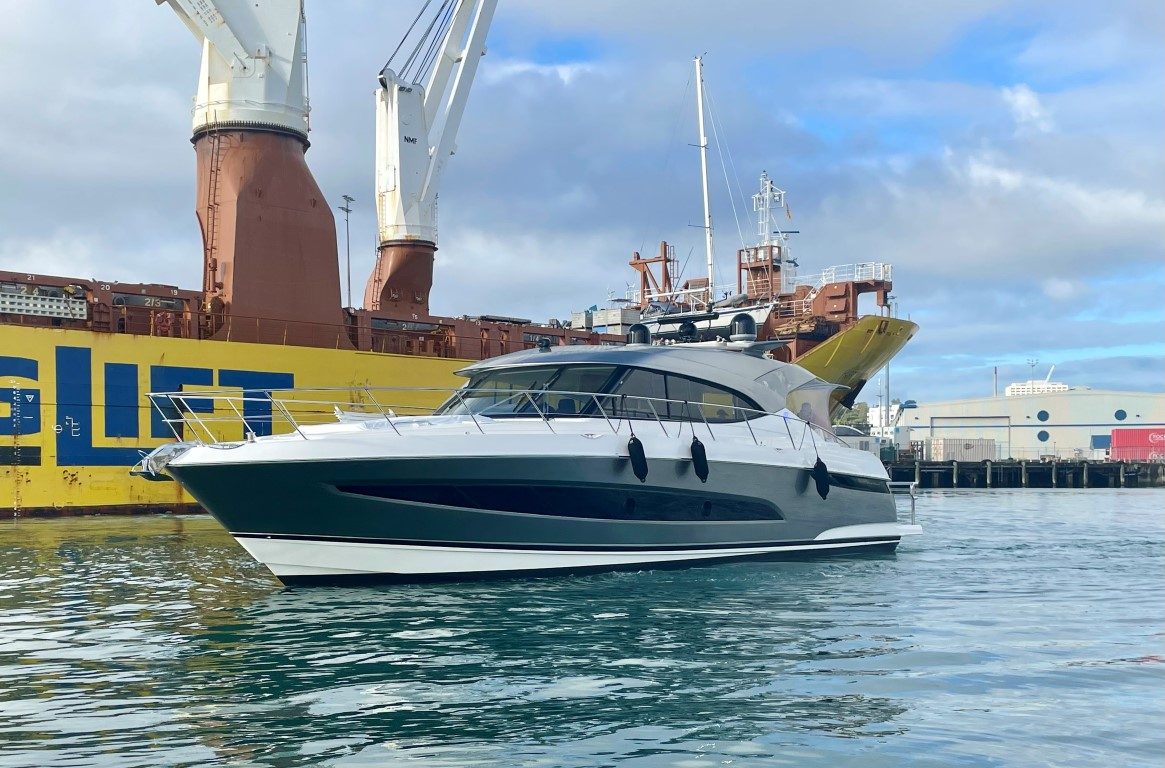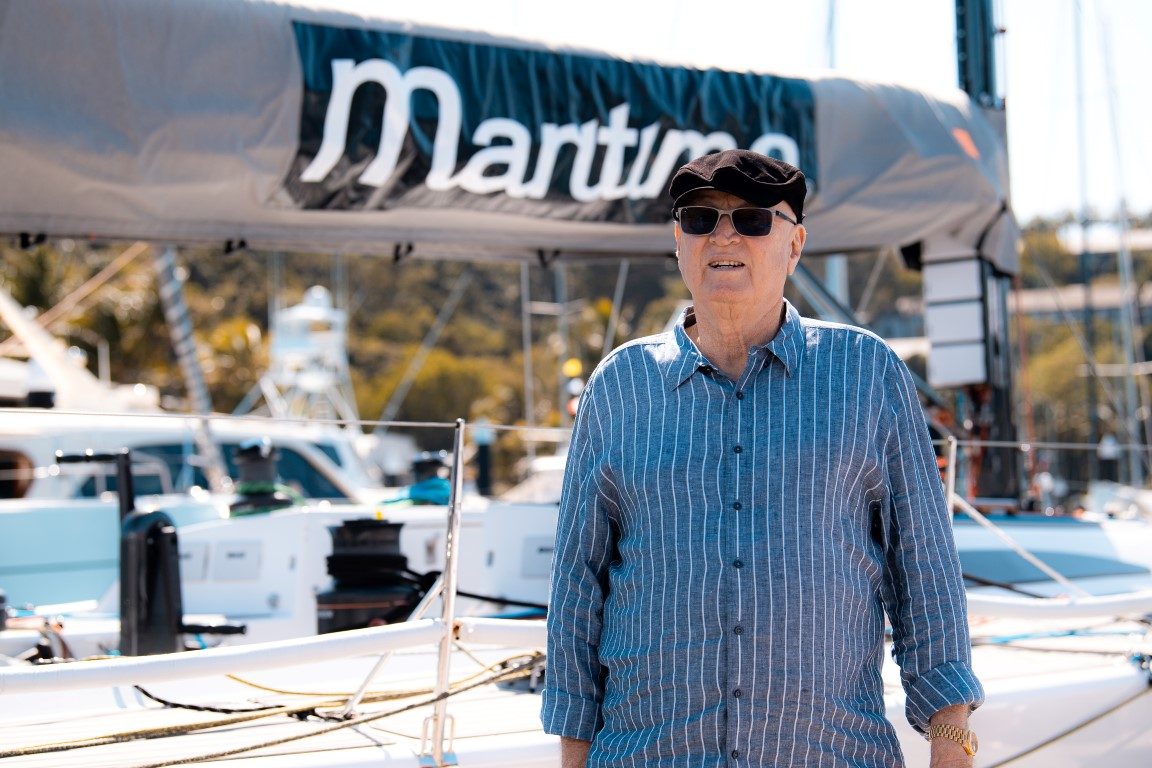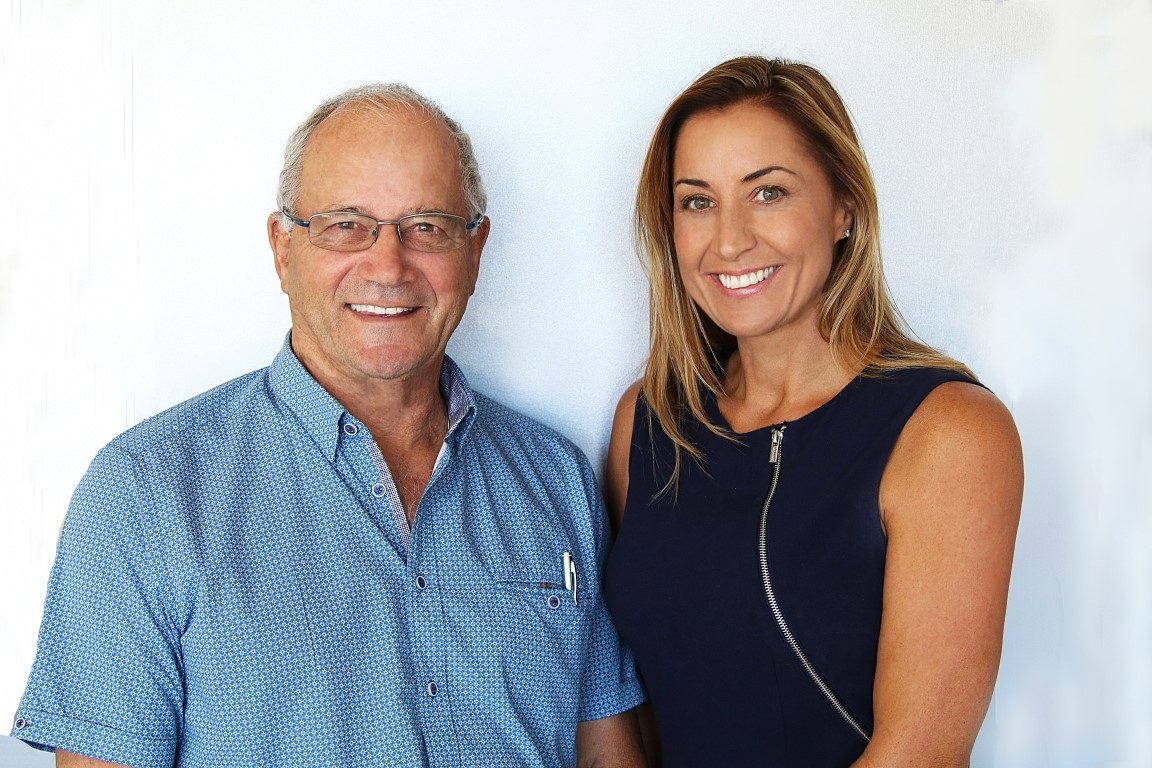

Ignorance can be a blessing or a curse – or both if you’re learning to sail.
Last time we wrote about finding our 47-foot, four-cabin monohull sailing yacht Sauvage, a 1989 Jeanneau Sunkiss 47.
It’s now early summer 2020 and with SV Sauvage now in our possession, we invested time driving between Cambridge and Auckland for day-long sailing jaunts on the fine waters outside Gulf Harbour. Between us, my wife and I combine either over-confidence with under-planning or ridiculous over-caution and over-planning – well, that’s what I think anyway. It makes for some decent, robust discussions (an understatement!), but we always come to a happy agreement.
Then one fine long weekend, with a little sailing experience under our belt, we headed out to Waiheke Island. The weather turned during the trip, so we ended up sailing in what we thought were strong winds. (What you learn with more experience!) Exhausted upon arrival at Matiatia Bay (where the passenger ferry from Auckland arrives), imagine our delight at finding a conveniently located, vacant mooring ball. After our third attempt, with much yelling and a few tantrums, we successfully moored, only to learn later from two old friends who we happened upon in the same bay that day, that we’d stolen the mooring ball! Unless you own it, don’t tie up! Lesson learned, but it had been such an undertaking to tie up that we decided to test our luck and stay for the night so we could explore Waiheke in the morning.

The next day, after having had a quick look around the closest parts of the Island, and already a bit stressed that we would be found out for using an illicit mooring ball, we packed up and shipped out. While on the way to Islington Bay – a very beautiful and shallow bay located where Motutapu Island meets Rangitoto Island – we re-watched a YouTube video on ‘How to Anchor’. As far as we were concerned, the key message was ‘drop anchor while slowly backing’. Easy, right?
Warned that it was a difficult passage at low tide (it was low when we arrived), we motored very carefully to ensure we came nowhere near the edges of the channel. Finding a spot to anchor in among the other yachts, we slowly backed while lowering the anchor. The anchor drove perfectly into the sandy seabed and the boat came to rest. According to YouTube we are sorted! We were very proud of our anchoring effort and settled in for the evening.
BUT – and you surely expected a BUT – we’d used a very simple formulation of three times the current water depth (low tide, remember.) And, you guessed it, at high tide (around midnight) our anchor quietly pulled out of the sand and Sauvage drifted off gracefully (and thankfully slowly) into the middle of the bay. Luckily, we missed the other yachts and only nudged a large, piratical-looking ship marooned in the middle of the bay. Our mast rigging made tap-tap-tapping sounds as it rested on the ship’s (very much higher) deck.





Smokehouse Bay on Great Barrier Island is a treasure – a paradise for visiting boaties. Facilities include a BBQ, firepit, wood-fired pizza oven (the results of our pizza baking are shown in the pictures), shower and a hot bath. Water is heated by a wood-fired pot- bellied stove. Of course, Smokehouse Bay also boasts a fish smoker, for which it is named – popular with those cruisers who also fish.
Dazed, confused and feeling like we were in some sort of eerie dream, we did what all other sailors have done before us: leapt out of bed at the speed of light, pulled the anchor in, drove forwards to our space (thank goodness the moon was out) and re-anchored, this time at high tide. No one else was any the wiser!
The adrenaline didn’t leave for quite a few hours and we spent the very early hours of the morning sitting on deck watching in case Sauvage drifted again. She did not – this time our anchoring attempt was a high tide success.
Had we chosen another, less protected anchorage (which we almost did on the way from Waiheke), this story would have ended in a much less happy way, maybe somewhere on the way to South America!
This outing forced us to learn about the risks of a poor anchor and/or poor anchoring skills. Now we always use an anchor monitoring app (with GPS that constantly monitors our location). On any occasion that our anchor lifts unexpectedly and we drift, or the length of the chain deployed is challenged, then the app lets out a deafening squawking alarm which we simply can’t ignore. I cannot stress enough the safety benefits this app brings the sailor, his family and his vessel.
Our anchor monitor app is Anchor Pro (both Android and iOS versions work a treat). Initially, we used it on our smart phone, but this proved inconvenient whenever we wanted to go ashore. Now we run our Anchor Pro app on a cheap tablet which we leave on Sauvage permanently. Should Sauvage ever move beyond our defined allowed distance from the anchor drop point, even if the boat is unmanned, the app sends us an email warning. It provides assurance both onboard and while we’re ashore.
Jump forward to mid-January 2022. We were lying at anchor in a protected spot at Great Barrier Island, taking 20 to 25 knots of wind from Tropical Cyclone Cody. Our anchoring, which we now have significantly more trust in than on those earlier trips, held the entire time, even during those strong gusts that spun us from side to side. We are very pleased with how far we have come!
Before and after Tropical Cyclone Cody, we spent quality time exploring Great Barrier Island. The island offers wonderful walks through almost untouched forests, including to the boatie’s dream destination of Smokehouse Bay, with its BBQ, firepit, pizza oven, hot shower and bath, the water heated by a pot-belly stove.
Travelling to Port Fitzroy, you can pull up to the dock (about 2.6m deep at low tide) and refuel and fill the water tanks. There is a great little dairy up the hill with a good range of supplies – we were there during the peak of summer and stocks were a little low – but the prices are not cheap (context – a pack of chicken nuggets which would sell for $5 on mainland sells for $20 on Great Barrier Island!).
The walks through the forest are amazing. Large parts are barely touched – almost like goat tracks – but good walkways have been cut in where needed.
The kids chucked the fishing rods in the water and were rewarded with a couple of kahawai – certainly nothing spectacular but pleasing all the same.
The swimming onshore is nice, with sandy beaches where stingrays quietly share the water (very exciting for the kids!). The whole family enjoyed a couple of ‘manus’ [‘bombs’] from the back of the boat, but after an hour or so of good play, we saw a few sharks and decided that swimming was best done in the clear, shallow waters closer to shore!
At Smokehouse Bay there is a reasonable anchorage. It is quite deep (8-10m about 30m out from the rocks at low tide), but the holding is okay – just beware of strong gusts as we saw a number of boats drag anchor a little. At this time of year there are many vessels in the anchorage (Kirsten counted nearly 50 on one night). During hard winds we moved just one nautical mile across the harbour to Kiwiriki Bay where shallower water and a muddy bottom provide a very strong hold, even in the midst of a cyclone! BNZ

HOW TO ANCHOR
WHAT YOU NEED TO KNOW:
• The depth of your boat below the water
• The distance between the anchor chain and the water
• Where you are in the tide cycle. Use the Tide Forecast at www.metservice.com to know times and heights for tide In, Out, Half In/Out.
Calculate the depth of the water taking it from the waterline and not the depth reported by the depth sounder. On our boat the DST sensor (transducer) is located 1.6m below the waterline; so, if the reading is ‘2m’ then we are actually in 3.6m of water.
Now, let’s say we anchor at a low tide of ‘2m’ in quiet, stable conditions. Then we should let out 3 X multiple (between 3 and 5 multiple is the formula, 3 in stable conditions, more in more disturbed conditions) of chain, plus waterline to the DST sensor and then 1m for our anchor above the waterline.
(2+1.6) x 3 + 1 = 11.8m (let’s say 12) is the length of chain to let out.
In a slow reverse, move backwards and drop the chain. As the chain is extended the anchor will drive into the seabed providing a strong anchor point, the anchor chain will pull tight and your boat will stop or start to move off to the side.
Anchoring is easy. By following these simple rules and recommendations, you will anchor correctly every time.






